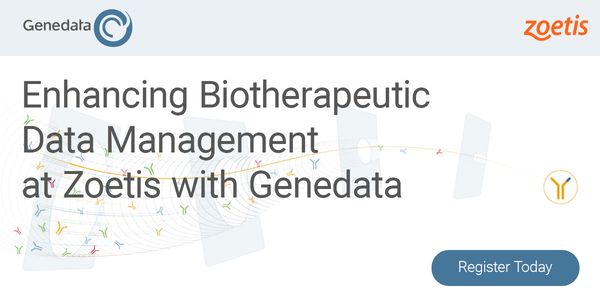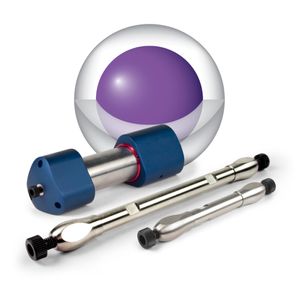Plants & Animals Webinars
In these webinars you will find current scientific breakthroughs in biology, botany and zoology and the part plants and animals play in evolution and ecology along with research devoted to the environmental impact related to these species.
Show More
-
FEB 08, 2017 | 3:00 PMDATE: February 8, 2017TIME: 3:00pm PT, 6:00pm ETMeloxicam is an analgesic NSAID commonly used in mice. Anecdotal evidence supports the use of alternative delivery methods for analgesics...
-
FEB 14, 2019 | 7:30 AMComparative oncology is the study of naturally-occurring cancers in pet animals (mainly dogs) to broaden and deepen our collective understanding of cancers in both companion species and human...
-
MAY 14, 2020 | 9:00 AMThe justification of sample size is one of the hardest sections of a proposal an IACUC (ethical review board) has to assess, yet is arguably one of the most important (1). This is a key oppo...
-
FEB 13, 2019 | 6:00 AMThe printing press, the automobile & the Internet are just a few technological achievements that have advanced our world. All were driven by human ingenuity: our innate creativity that in...
-
MAR 05, 2025 | 10:00 AMA venous blood gas is a powerful tool for the assessment and monitoring of animals with urgent or emergent conditions. It requires a very small volume of blood, making it feasible in the sma...
-
FEB 08, 2017 | 10:30 AMDATE: February 8, 2017TIME: 10:30am PT, 1:30pm ETThe cat remains an important comparative species for studying the long-term safety and efficacy of emergent medical modalities, such as...
-
FEB 08, 2018 | 12:00 PMThe translation gap in biomedical research can be attributed in part to differences in how outcomes are assessed in preclinical research and in the clinic. Reasons for these mismatches includ...
-
FEB 07, 2018 | 9:00 AMTuberculosis (TB) is the No.1 cause of death due to a single infectious agent in the world today. According to the global report from World Health Organization, one third of world population...
-
FEB 08, 2017 | 12:00 PMDATE: February 8, 2017TIME: 12:00pm PT, 3:00pm ETIn-vivo surgical models are becoming more prevalent and more critical to the drug development process. As the vast majority of ind...
-
FEB 20, 2025 | 9:00 AMThe webinar on the Zoetis and Genedata collaboration will cover key topics such as the challenges in biotherapeutic research, data management issues, and the need for centralized data. Atten...
-
FEB 08, 2018 | 9:00 AMDigital technology is improving the speed and accuracy of all the world’s work processes and activities, the including the research vivarium. This presentation will address some...
-
FEB 08, 2017 | 10:30 AMDATE: February 8, 2017TIME: 10:30am PT, 1:30pm ETThe utility of animal models in drug development is limited, in part, by the measures available to researchers for monitoring animals. I...
-
FEB 13, 2019 | 9:00 AMIn biomedical research, data should be treated as first-class corporate assets--they were expensive to create, they are expensive to maintain, and they have future business value. The petabyt...
-
FEB 07, 2018 | 1:30 PMThe aerodigestive tract is a combination of the respiratory tract and the upper portion of the digestive tract. As these two organ systems share many of the necessary structures used for swal...
-
FEB 14, 2019 | 12:00 PMThe lung is a highly complex organ, comprised of more than 40 cell types that are responsible for various important functions, the lung’s complexity contributes to the subsequent challe...
-
FEB 14, 2019 | 9:00 AMExperimental models that promise to replace animal tests that are currently required for drugs and chemicals are rapidly proliferating. This includes a number of novel solutions offered by bi...
-
MAY 14, 2020 | 12:00 AMAnimal welfare is the most important issue in any in vivo laboratory. The ability to detect and intervene in cases where the conditions of animals may be deteriorating as well as the ability...
-
FEB 08, 2017 | 12:00 PMDATE: February 8, 2017TIME: 12:00pm PT, 3:00pm ETLarge animal models have recently become a staple in biomedical research. The pig’s similarities to humans in terms of genet...
-
FEB 08, 2018 | 6:00 AMNonterminal blood collection from mice is frequently performed in biomedical research. Multiple phlebotomy sites and restraint techniques are available to investigators. Methods that minimize...
-
FEB 13, 2019 | 7:30 AMDigitalization has transformed virtually every industry, but it has been slow to gain traction within the preclinical phase of the drug development journey. Recent advances in digital vivariu...
-
FEB 08, 2018 | 9:00 AMAssessment of how changes in husbandry affect an animal can be challenging as most common methods of assessment, such as corticosterone levels, are more reliable for assessment of acute stres...
-
APR 20, 2023 | 6:00 AMC.E. CREDITSThe use of Δ8-THC in consumer products has caused safety concerns in the US. Though Δ9-THC is the main intoxicating component in the cannabis plant, its isomer, Δ8-THC, nat...
-
FEB 14, 2019 | 6:00 AMApproximately 30% of drugs have failed in human clinical trials due to adverse reactions despite promising pre-clinical studies, and another 60% fail due to lack of efficacy. The NIH Tissue C...
-
FEB 09, 2017 | 3:00 PMDATE: February 9, 2017TIME: 3:00pm PT, 6:00pm ETA colony of woodchucks were to be used on studies which involved repeated IV dosing and/or multiple blood collection time points. Some of...
-
FEB 13, 2019 | 10:30 AMXenobiotic-induced cardiotoxicity is a major concern for both pharmaceuticals and chemicals in the marketplace. For drugs, "Thorough QT/corrected QT (QTc)" (TQT) studies are corners...
-
FEB 14, 2019 | 9:00 AMThe goal of transforming one’s pipeline to a steady source of usable data is within our reach. Data that could be used for clinical insights or earlier in the drug discovery process. &n...
-
FEB 08, 2017 | 9:00 AMDATE: February 8, 2017TIME: 9:00am PT, Noon ETTraining programs for animal care and use personnel are integral to both animal welfare and quality research outcomes. There are a variety...






























































